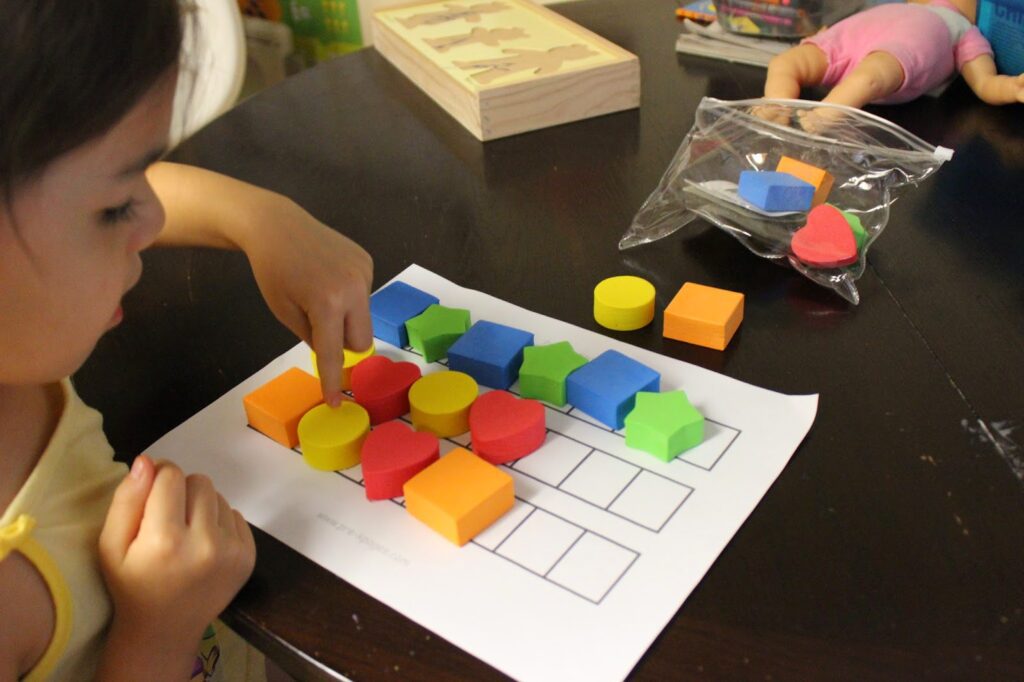Games for Learning Shapes & Sizes
The use of educational games has been gaining popularity in recent years as a tool for enhancing children’s learning outcomes. With the development of interactive and engaging games, educators and parents now have access to a wide range of tools that can make learning more enjoyable for children. In this comprehensive guide, we will explore the benefits of incorporating educational games into the learning process and various strategies for teaching shapes and sizes to children of different age groups.
Benefits of Incorporating Educational Games into the Learning Process
The incorporation of educational games into the learning process has several benefits for children. Firstly, games can make learning more enjoyable and engaging for children, which can lead to increased motivation and enthusiasm. This, in turn, can help to foster a positive attitude towards education and a love for learning.
In addition, educational games can help children to develop problem-solving skills, critical thinking, decision-making, and creativity. As children progress through different levels in a game, they are challenged to think strategically, make informed decisions, and come up with new approaches to problem-solving. This can help to develop their cognitive skills and improve their academic performance.
Furthermore, games can provide immediate feedback to children on their progress and performance, which can help them to identify their strengths and weaknesses in a certain subject or topic. This can help children to focus on areas that need improvement and practice until they achieve mastery.

Strategies for Teaching Shapes and Sizes to Children of Different Age Groups
Teaching shapes and sizes is an essential part of early childhood education. Here are some strategies that educators and parents can use to teach shapes and sizes to children of different age groups.
Preschoolers:
Preschoolers are at an age where they are just starting to learn about shapes and sizes. It is essential to make use of visual aids such as flashcards, posters, and manipulatives like blocks, puzzles, and tangram pieces. Preschoolers can also benefit from interactive games that allow them to practice identifying basic shapes and sizes through play. One example of such a game is “Shapes and Colors Bubbles,” which is designed for children aged 2-5. The game is available on the App Store and Google Play and can help children learn about shapes and colors in a fun and interactive way.
Another popular game that can help preschoolers learn about shapes is the “Shape Puzzle” game, which is designed to teach children about basic shapes like circles, squares, rectangles, and triangles. The game involves dragging the puzzle pieces to their designated spaces on the screen, helping children to practice hand-eye coordination and develop problem-solving skills. The game is available on the App Store and Google Play.
Kindergarten:
Kindergarten children are usually more advanced in their understanding of shapes and sizes. In this stage, educators and parents can use more complex visual aids like geometric shapes and patterns to teach children about symmetry, congruence, and similarity. Additionally, interactive games like “Shape Builder” and “Endless Shapes” can help kindergartners practice their spatial reasoning skills and identify different shapes and sizes.
The “Shape Builder” game challenges children to build different pictures using various shapes like triangles, squares, and circles. It is available in both free and paid versions on the App Store and Google Play. “Endless Shapes” is a game that allows children to create three-dimensional shapes by dragging geometric pieces around the screen. The game is available for free on the App Store and Google Play.
Elementary School:
For elementary school children, educators and parents can make use of more challenging visual aids like three-dimensional shapes and real-life objects. Interactive games like “Monster Mansion Shape Match” and “BrainPOP Jr. Videos” can be useful tools for making learning fun and engaging.
“Monster Mansion Shape Match” is a game that challenges children to match different shapes to their respective holes. It is suitable for children aged 5-8 and is available on the App Store and Google Play. “BrainPOP Jr. Videos” is a series of educational videos that cover different topics, including shapes and sizes. It is available on the BrainPOP Jr. website.
Reviews of Different Games that Effectively Teach Shapes and Sizes
There are several games available for children to practice their skills in identifying shapes and sizes. Here are some reviews of different games that effectively teach shapes and sizes.
Shape Builder
Shape Builder is an interactive game suitable for children aged 2-8. The game allows children to drag and drop different shapes to form a picture. Children can practice their spatial reasoning skills and identify different shapes and sizes while creating different pictures.
BrainPOP Jr. Videos
BrainPOP Jr. Videos is a series of educational videos that cover different topics, including shapes and sizes. The videos are entertaining and informative, making learning fun and engaging. Children can watch the videos online and practice their skills in identifying shapes and sizes.
Endless Shapes
Endless Shapes is an interactive game designed for children aged 2-8. The game challenges children to create different shapes by dragging and dropping different pieces. Children can practice their spatial reasoning skills and identify different shapes and sizes while creating different shapes.
The Appropriateness of Games for Different Age Brackets
It is essential to select games that are appropriate for the age bracket of the child. While games can be an effective tool for learning, they must be designed with the cognitive and developmental capacities of the child in mind. For example, games that are too complex for preschoolers may lead to frustration and demotivation, while games that are too simple for elementary school children may not challenge them enough. Parents and educators must also ensure that the games selected are designed in line with the learning objectives.
